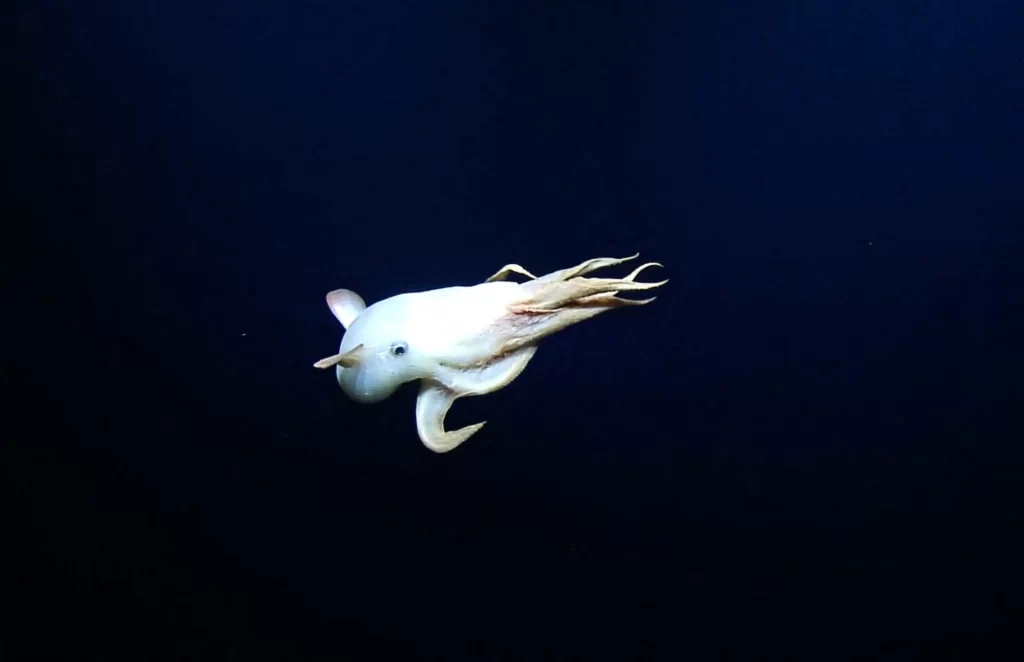In a remarkable discovery, scientists have recently encountered a rare “Dumbo” Deep sea Dumbo octopus at an astonishing depth of over 5,500 feet in the waters near the Hawaiian islands. This intriguing creature, named after the Disney character due to its distinctive pair of flapping fins atop its head, was captured on camera by the ROV Atalanta during an expedition within the Papahānaumokuākea Marine National Monument, situated northwest of Hawai’i.

Amidst their excitement, researchers can be heard exclaiming on Deep sea Dumbo octopus, “I’m glad we got to see a live one,” while another adds with enthusiasm, “Oh the flappy, flappy ears.”
These “Dumbo” octopuses are known to be the deepest-dwelling octopus species, residing on the ocean floor at astonishing depths of up to 13,000 feet. The research team has been fortunate to spot several of these captivating creatures in the area.
In footage shared recently, another enigmatic Dumbo octopus is observed nestled on the seabed. One researcher humorously remarks, “There’s that beach ball we’ve been looking for.”
The researchers have marveled at the diversity of Dumbo octopuses in the Papahānaumokuākea Marine National Monument, describing them as some of the most exquisite specimens globally. In an accompanying note on the footage, they state, “Our Corps of Exploration spotted this one over 1,600 meters deep while exploring Woollard Seamount, roughly 40 nautical miles north of Hōlanikū (Kure Atoll) during our NA154 expedition. Enjoy up-close views of its textured and somewhat translucent skin while making ‘eye contact’ with this cirrate cephalopod.”
Surprisingly, very little is known about the 17 distinct species categorized as Dumbo octopuses, scientifically referred to as Grimpoteuthis spp. These deep-sea dwellers appear to have adapted to the extreme pressures and cold temperatures of the deep ocean by evolving unique features, such as mantle fins while sacrificing traditional propulsion mechanisms. Their reproductive habits are ongoing, distinguishing them from shallower-water octopus species.
These remarkable creatures have been discovered in diverse oceanic regions, ranging from New Zealand to California’s Monterey Bay to Papua New Guinea. Their size can vary from less than a foot to exceeding 6 feet in length, and notably, they lack an ink sac commonly found in other octopus species.
Although Dumbo octopuses are unlikely to be directly impacted by human activities due to their extreme depth, they face natural predators, including tuna, sharks, dolphins, and various marine mammals.
“Dumbo octopuses are naturally rare, and the deep sea is enormous, so these species have specialized behaviors to increase the likelihood that they can successfully reproduce anytime that they find a mate,” explains the conservation organization Oceana. “Females apparently always carry eggs in different stages of development, and they are able to store sperm for long periods of time after mating with a male. Using these advantages, female dumbo octopuses can transfer sperm to their most developed eggs any time the environmental conditions are right for reproducing.”
